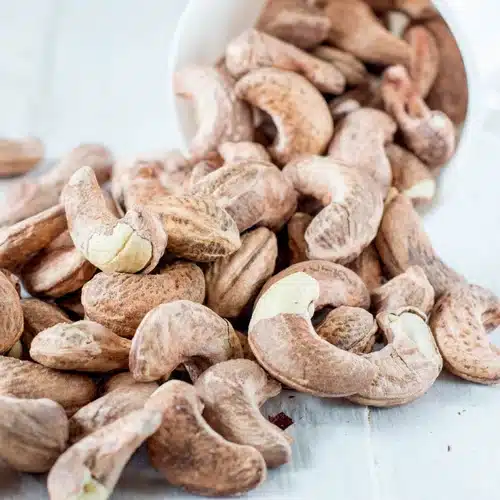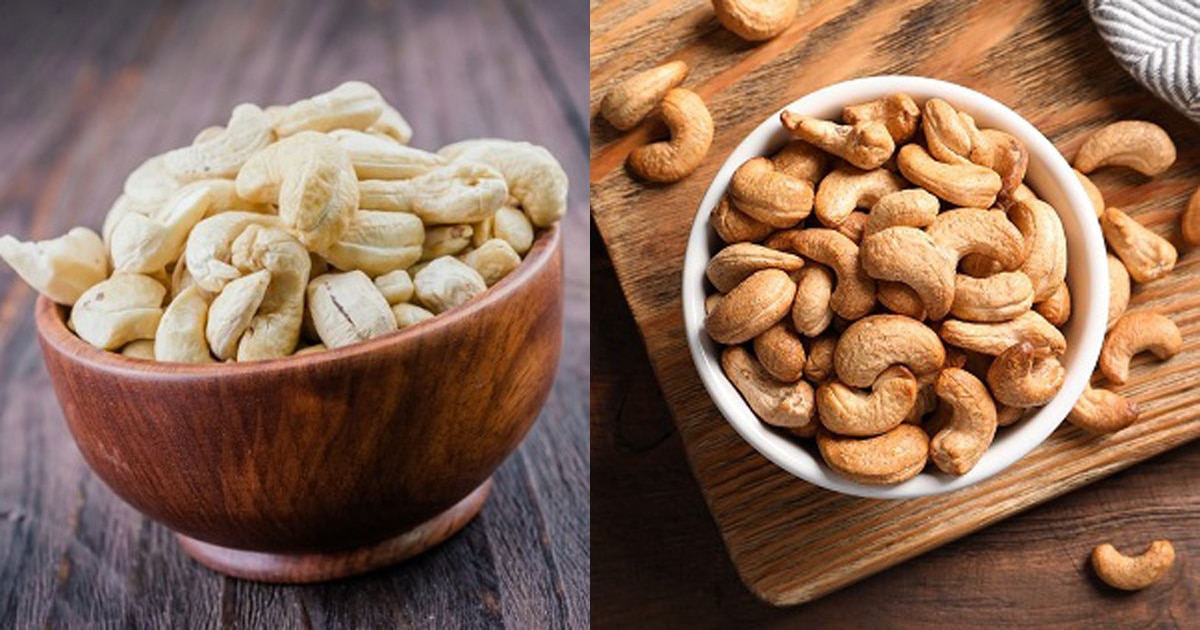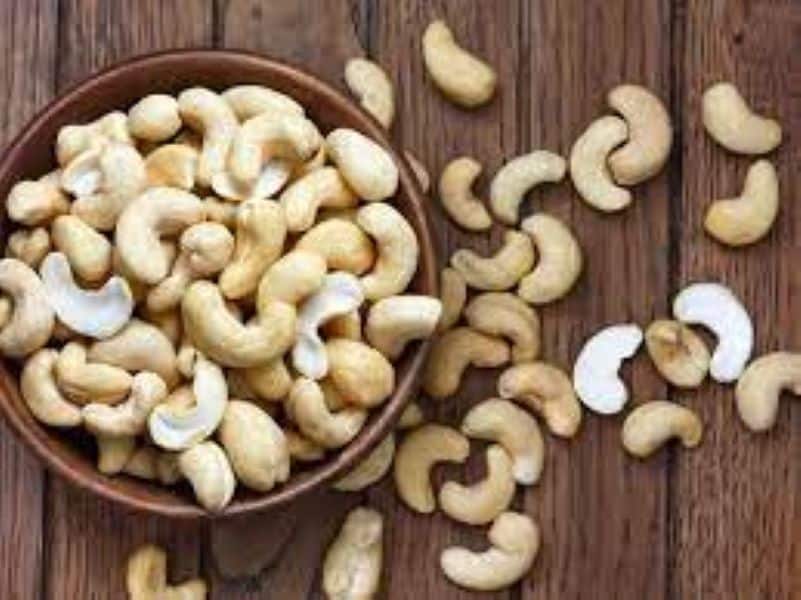Blog
What are the Different Types of Cashew?

1. Understanding Cashew Cultivation:
Before you can taste all the varieties of cashews, you first have to learn how to cultivate them correctly. Tropical climates are the most suitable for cashew trees (Anacardium occidentale), which are found mainly in Brazil, India, Vietnam, and Africa. On these trees are cashew apples and each of them contains a single cashew nut stuck to it. The cashew nut has a good shell that is protected by a caustic resin. It is carefully weeded and prepared to make sure it is of the best quality and taste.
2. Common Varieties of Cashew:
a. Standard Cashew (Anacardium occidentale):
The usual cashew variety is the one that is mostly found on the market.
* A kidney-shaped nut is found inside the hard shell of standard cashews. They are respected for their ability to be used in many dishes and across various cuisines.
* They are an essential component of many sweet and spicy snacks, pastries and desserts.
b. Organic Cashew:
* An organic cashew is one that is farmed without the use of synthetic fertilizers and pesticides.
* Because they are cultivated as per specific environmental norms, organic nuts are a better option for individuals who are concerned about the environment.
* The nutty taste and the fact that they are 100% natural make them popular with people who are health conscious and want to eat natural foods only.
3. Specialty Cashew Varieties:
a. Wholes:
* “Whole cashews” are nuts that are whole and not broken into pieces.
* Whole cashews are used in high end meals, gourmet food snack mixes, and plated meals because they look nice and all of the pieces are the same.
* For this reason, they are the key ingredients in the making of both sweet and savory dishes that high-end chefs all over the world love using.
b. Splits:
* Splits are cashew nuts which have been cut through the middle on a lengthwise direction and therefore have a distinctive look and feel.
* Split cashews are perfect for places where appearance is the number one priority. They are not only used decoratively on dishes but also in bouquets and in many sweets made by hand.
* Regular sizes and shapes allow uniform distribution of food and give the food presentations a general aesthetic quality.
c. Pieces:
* Cashew pieces basically consist of fragmented or broken nuts and they are very portable and affordable instead of whole nuts or splits.
* Cashew pieces have various uses in the kitchen. They often appear in baking, cooking, and snack recipes.
* Cashew pieces have the same great flavor as whole cashews, although they cannot boast the same shape.
4. Regional Variations:
a. Indian Cashews:
* India is widely known as a producer of good quality cashew nuts, which are mainly grown in the states of Kerala, Maharashtra, and Karnataka.
* People are aware that cashews are always big, tasty and high quality in India. They are appreciated not only by fastidious customers but also by culinary masters.
* Predominantly, India is a widely known cashew market player in the world that has been sending high-quality nuts to numerous destinations throughout the world due to its long diplomacy and expertise in cashew cultivation.
b. Brazilian Cashews:
* Brazil has a successful cashew business, particularly in the states of the northeast where the mild tropical climate is suitable for the growing of cashew trees.
* Cashews from Brazil are considered as unique because of the special kind of flavor and smell coming out from there soils and way of farming.
* Used in desserts, candies and Brazilian traditional food, these cashew nuts offer a complex flavor that indicate how rich their culture is.
c. African Cashews:
* In fact, the majority of the cashews in the world are produced in African countries such as Ivory Coast, Nigeria, and Tanzania.
* The different tastes of African cashews are due to the soil type, changing climatic conditions, and farming methods.
* African cashews have wide use in local dishes and have gained a reputation for their distinct taste and nutritional quality. Moreover, they stimulate social and economic development, as well as culinary creativity.
5. Flavor Profiles and Culinary Applications:
a. Roasted Cashews:
* Regardless of whether they are oil fried or roasted using an air drier, cooking cashews changes their taste and feel by making them more nutty.
* Roasted nuts such as cashews are commonly consumed as a snack by themselves or added to trail mixes. People succumb to their unresistable smell and crunch and have a hard time resisting them.
* They can be used in a lot of ways; e.g. in salads, stir-fries, baked goods and savory dishes. They give a lot of taste and nutrition to different recipes.
b. Salted Cashews:
* Cashews with the salt have the superb sweet and nutty flavor since they are rolled in a layer of salt. Salted cashews, like classics, are the thing you want when you are looking for something salty or you are with your friends.
* They are everybody’s favorite snack food because they are crispy and salty, a combination that is hard to resist.
c. Honey Roasted Cashews:
* Honey-roasted cashews may be prepared by brushing them with a delicious honey glaze before baking them.
* By pairing sweet and nutty flavors, you get an amazing candy treat that not only satisfies your nutritional needs but also your craving for sweets.
* Honey-roasted cashews will make any dessert, granola bar, yogurt parfaits and charcuterie boards look more exclusive and trendy.
d. Spicy Cashews:
* Spicy nuts are flavored with a mixture of spices such as curry powder, chili powder, paprika or cayenne pepper. Every bite comes with a spicy punch.
* Spicy cashews are flavorful with aromatic and spicy tastes which make them ideal for kitchen adventurers.
* Incorporating them in snack mixes, party plates, appetizers and recipes with foreign flavours provide an exciting taste that enlivens senses.
6. Health Benefits of Cashews:
a. Nutrient-Rich Profile:
* Cashews are packed with nutrients. They have protein, good fats, vitamins, minerals and other nutrients.
* The fact that they are rich in nutrients makes peanuts helpful in the metabolic processes and other important functions of the body.
b. Heart Health:
* Eating cashews as part of a healthy diet may help reduce your cholesterol levels and therefore minimize your likelihood of heart disease.
* Monounsaturated and polyunsaturated fats in them help maintain healthy lipid levels, which, in turn, is beneficial for the heart and reduces inflammation.
c. Weight Management:
* Although peanuts are rich in calorie, you can still control your weight if you eat them in moderation as a part of a healthy diet.
* Proteins and fibers in them will make you feel satiated for longer. Also, they will regulate your appetite, thus preventing you from overeating.
Conclusion:
Each kind of cashews provide a tempting variety of tastes, textures, and cooking choices both to nut lovers and food lovers. Every variety of cashew, ranging from the common to the special, has its own unique features as well as cultural and social significance. In spite of being eaten as a health snack, added to recipes or variously used in culinary creations, still cashews keep delighting the world with their flavors. Appreciating the variety in the types of cashews which you eat not only makes the food taste better, but also familiarizes you with the history, culture and health benefits of this favorite nut so much better. Since we enjoy the many types of cashew, let’s acknowledge the richness in nature and the endless adventure of finding new food.
Q3: What distinguishes W180, W240, and W320 grades of cashew nuts?
A3: These grades refer to the number of kernels in a pound. W180 means there are 180 whole kernels in a pound, W240 indicates 240 kernels, and W320 signifies 320 kernels. The lower the number, the larger the cashew kernels.
Q4: Are there different types of cashew trees based on their cashew apple colors?
A4: Yes, cashew apples come in various colors, such as yellow, red, and green. The coloration often depends on the specific variety of the cashew tree.
Q5: Which regions are known for cultivating specific types of cashew varieties?
A5: Cashew cultivation is prominent in tropical regions like India, Vietnam, Brazil, and Africa. Each region has its unique varieties and cultivation methods suited to its climate.
Q6: What is the difference between raw cashews and roasted cashews?
A6: Raw cashews are unprocessed nuts, whereas roasted cashews undergo a heating process. Roasting enhances their flavor and makes them crunchy, often seasoned with salt or other spices.
Q7: Are there any specialized varieties of cashews used for culinary purposes?
A7: Yes, some cashew varieties are specifically cultivated for culinary purposes. These varieties are often chosen for their large size, rich flavor, and quality, making them ideal for cooking, baking, and snacking.
Q8: How do cashew varieties differ in terms of nutritional content?
A8: While the nutritional content can vary slightly between different varieties, cashews, in general, are rich in healthy fats, proteins, vitamins, and minerals. The differences in nutritional value are not significant enough to impact their overall health benefits.
Q9: Are there organic varieties of cashew nuts, and how are they cultivated differently from conventional ones?
A9: Yes, there are organic varieties of cashew nuts. Organic cashews are cultivated without the use of synthetic pesticides or fertilizers. Instead, organic farming methods focus on natural and sustainable practices to ensure the health of the trees and the environment.
Q10: Can you find rare or exotic varieties of cashew nuts, and what makes them unique?
A10: Yes, there are rare and exotic varieties of cashew nuts, often specific to certain regions. These varieties are unique due to their distinctive flavors, textures, or sizes, making them highly sought after by connoisseurs. However, their availability is limited, and they are often more expensive than common varieties.





“Thank you for consistently delivering great content.”
“You have a unique way of connecting with your readers.”
“Your words have a way of making my day brighter.”
“Your passion leaps off the page!”
“Your positivity is exactly what the world needs.”
“This is one of the most uplifting blogs I’ve come across.”